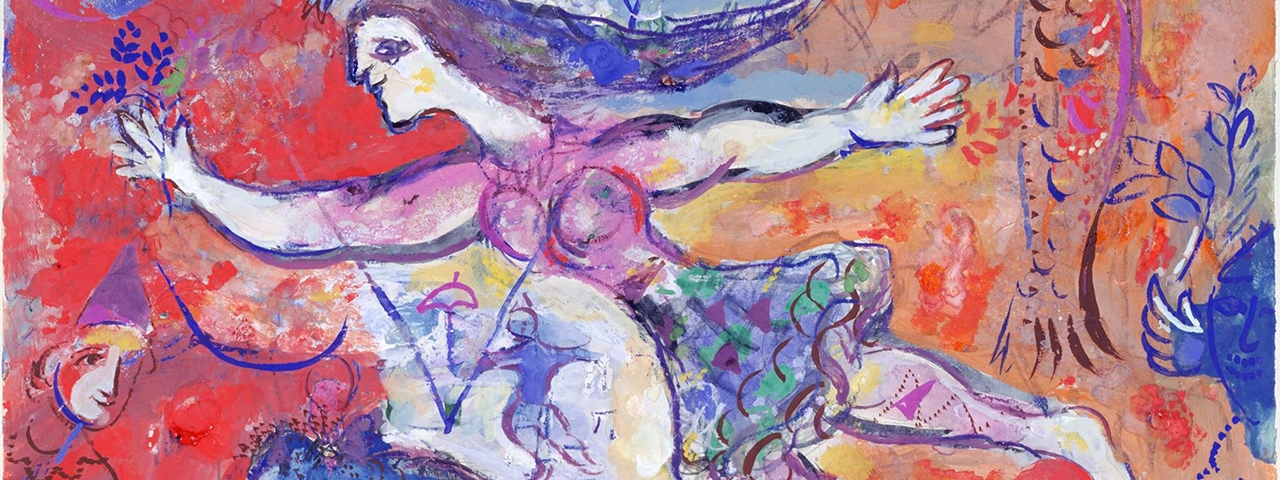Culturespaces is presenting an exhibition that sheds light on an unexplored dimension of Marc Chagall, who was celebrated as a master of colour by the artists and critics of his day. The exhibition, which is devoted to the last part of the artist’s career, highlights his change of style and reveals each stage in the artist’s creative process, from 1948 until his death in 1985. 130 works (paintings, drawings, washes, gouaches, collages, sculptures and ceramics) reflect Chagall’s exploration of black and white and his subsequent mastery of particularly luminous, intense, and profound tints.
A RENEWED AND UNIQUE APPROACH TO WORKING WITH COLOUR
Although Marc Chagall was considered a master of colour by the artists and critics of his day, they were less familiar with another approach he adopted—the constant dialogue in his oeuvre between colour and black and white—, which was a decisive phase in the renewal of his art at the turn of the 1950s. This dialogue emerged in the works dating from the 1920s and ‘30s, in which the mastery of colour, which was already present in the young artist’s oeuvre, anticipated and inspired the conception of black and white drawings and engravings. In the post-war period, the colour black—with its impenetrable and overpowering expressiveness—became the catalyst for sombre memories, as well as the aspirations of a Europe that was undergoing reconstruction. Ever in tune with his times, Chagall inverted the creative process and adopted a bold approach, which, from the exploration of the luminous and formal subtleties of black and white, led him to develop even brighter and more intense chromatic tonalities. Furthermore, his experience in creating monumental pictorial spaces, which he had worked on in the United States, thanks to commissions for ballet stage sets and costumes, inspired a renewed interest in colour, which was perceived as an element in constructing volumes and spaces.
A RANGE OF TECHNIQUES USED IN HIS WORK
This exhibition invites visitors to explore this fascinating process, which manifested itself in the great diversity of techniques used by the artist during this period, upon his return from his exile in America (1941–1947). The techniques ranged from washes to gouaches, engraving to painting, and sculptures made from marble, plaster, and bronze, and ceramic objects.
The exhibition will bring together works loaned exceptionally for the event—The Harlequin from the Taisei Corporation in Tokyo and Lovers on the Stake from the Odermatt Collection—and will present works from private collections that have rarely been exhibited in Europe.
Some of the collages in the exhibition, which were discovered in the artist’s studio after his death—such as Sketch for The Concert, Sketch for Le clown rouge devant St-Paul, and Sketch for Opera Figures—, have never been exhibited.
The major works in oils executed in the years 1968–1971 (The Harlequin, Mauve Nude, and The Fantastic Village) will be presented with their preparatory sketches and collages for the first time.These were the many facets of a complete oeuvre, in which the artist’s comprehension of contrasts, tonalities, chiaroscuro, light, shadows, and halftones produced bold, vivid, and monumental works in colour.




























